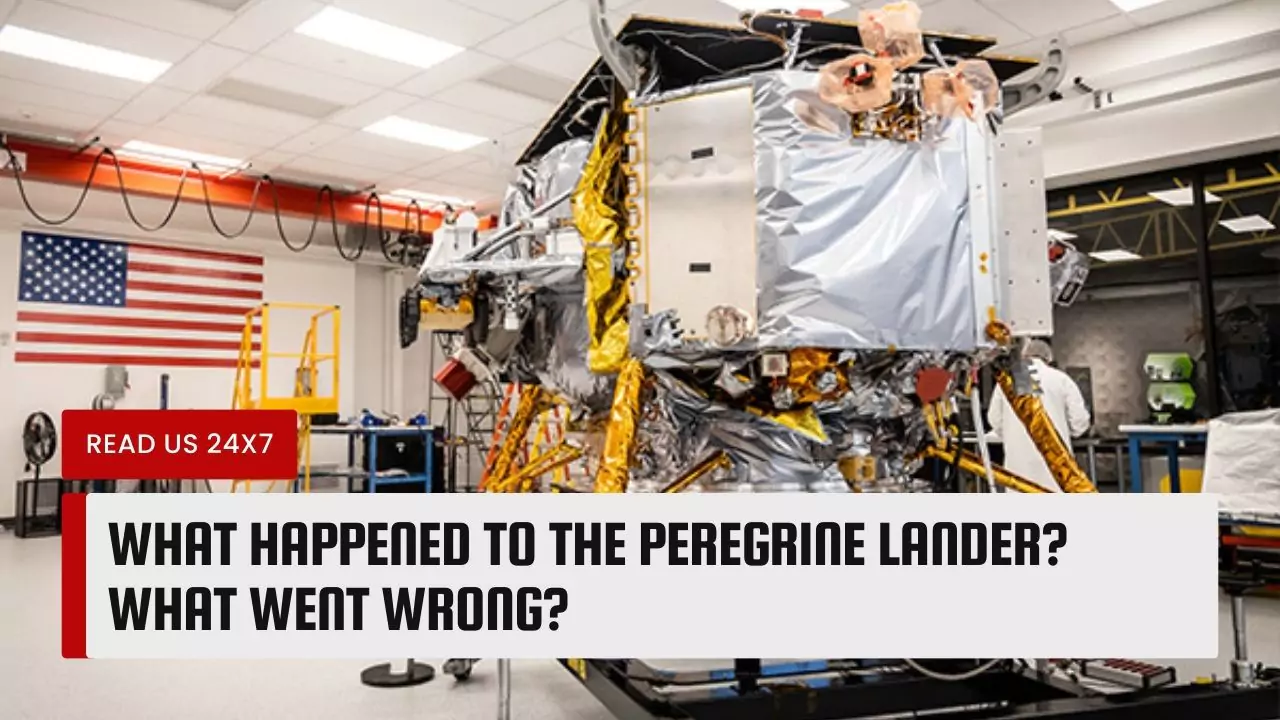The Peregrine Lander was a robotic spacecraft that was supposed to land on the moon in December 2023, but it encountered a series of problems that prevented it from achieving its goal. The lander was part of a collaborative mission between NASA and several private space companies, including Astrobotic, which built and operated the Peregrine. The mission aimed to deliver scientific instruments and human ashes to the lunar surface, as well as demonstrate the feasibility of commercial lunar landing services. However, the Peregrine Lander failed to perform as expected, and its fate remains uncertain.
The Peregrine Lander and Its Purpose
The Peregrine Lander was designed to be a low-cost and versatile lunar lander that could carry up to 90 kg of payload to various locations on the moon. The lander was based on Astrobotic’s CubeRover platform, which used a modular and scalable architecture that could accommodate different types of payloads and missions. The lander was powered by solar panels and batteries and used a propulsion system that consisted of four main thrusters and 12 attitude control thrusters.
The Peregrine Lander carried 14 payloads from 10 different countries, including NASA’s Lunar Surface Experiments Package (LSEP), which contained several instruments to measure the lunar environment and test technologies for future exploration. The lander also carried the Celestis Luna 03 mission, which contained the cremated remains of more than 50 people who wanted to be memorialized on the moon. The lander was supposed to touch down near Lacus Mortis, a large crater in the northern hemisphere of the moon, and deploy its payloads on the surface.
What Went Wrong?
The Peregrine Lander was launched on December 15, 2023, aboard a United Launch Alliance (ULA) Vulcan Centaur rocket from Cape Canaveral, Florida. The launch was successful, and the lander separated from the rocket and entered a trans-lunar injection orbit. However, soon after the separation, Astrobotic reported that the lander had experienced a fuel leak that caused a loss of pressure in one of its main propellant tanks. The leak also affected the lander’s attitude control system, which relied on the same propellant.
The fuel leak compromised the lander’s ability to perform the necessary maneuvers to reach the moon and land safely. Astrobotic tried to salvage the mission by adjusting the lander’s trajectory and using the remaining propellant more efficiently. However, the lander faced another challenge when it approached the moon: it was unable to orient itself properly to face the sun and recharge its batteries. The lander’s solar panels were designed to track the sun automatically, but the fuel leak and the attitude control issues prevented them from doing so. As a result, the lander’s power level dropped significantly, and it entered a low-power mode that limited its communication and operation.
Astrobotic has not been able to reestablish contact with the lander since December 23, 2023, when it was supposed to perform its final descent and landing. The lander’s last known location was about 100 km above the lunar surface, in a highly elliptical orbit. Astrobotic has not confirmed whether the lander crashed or survived the landing, but it has stated that the chances of mission success are very low.
Consequences for Future Collaborative Moon Missions
The Peregrine Lander’s failure has implications for the future of collaborative moon missions, especially for the private space sector and NASA’s Artemis program. The Peregrine Lander was the first of several commercial lunar landers that NASA contracted under its Commercial Lunar Payload Services (CLPS) initiative, which aims to foster the development of a lunar economy and support the agency’s goal of returning humans to the moon by 2024. The Peregrine Lander was also the first lunar lander to be launched by a U.S. company since the Apollo program ended in 1972.
The failure of the Peregrine Lander could affect the confidence and credibility of the private space companies that are involved in the CLPS initiative, as well as the reliability and safety of their lunar landing services. The failure could also delay the delivery of some of NASA’s payloads to the moon, which could impact the agency’s scientific and technological objectives for lunar exploration. Moreover, the failure could pose a challenge for NASA’s Artemis program, which depends on the success of the CLPS initiative to provide transportation and infrastructure for the human landing system and the lunar Gateway.
However, the failure of the Peregrine Lander could also serve as a learning opportunity and a motivation for improvement for the private space sector and NASA. The failure could help identify the technical and operational challenges and risks of lunar landing, and inspire the development of more robust and resilient solutions. The failure could also reinforce the importance and value of collaboration and innovation for achieving the common vision of exploring and utilizing the moon.



